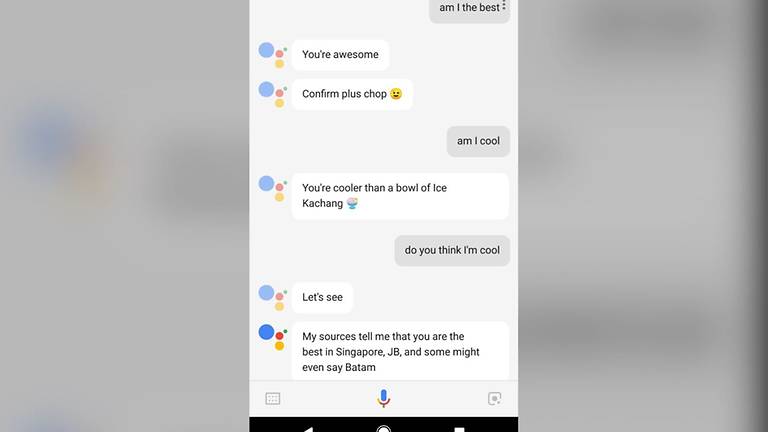Internet giant Google made the announcement that its voice-activated personal assistant Google Assistant will be made available in Singaporean English (popularly known as Singlish). This feature will be available in the Google’s newest phone Pixel 2 XL which is making its debut in Singapore this month on November 15.
Google Assistant is quite smart enough to imitate Singlish though it take some more time to fully understand the lexicon of this language. During a demonstration at the Google Asia Pacific office at Mapletree Business City II today, the Assistant was told, “Talk to me in Singlish.”
To the amazement of people present there, it replied, “Okay lor, you want me to talk liddat ah? Can one no problem. Oh no, my English is broken. Looks like we need to stop for now. But I have to say, speaking Singlish feels pretty shiok!”
Google Assistant currently understands the British, American, Australian, and Canadian English accents. It also gets commands in Bahasa Indonesia, Hindi, Korean, Japanese, German, Brazilian, Portuguese, and French. The addition of Singaporean English expands Google Assistant's coverage to at least 12 accents around the world.
Pixel 2 XL users will have access to the feature starting November 15, when the smartphone goes on sale in the country. Users of Android phones 6.0+ (Marshmallow and above) will also be able to use the feature over the next couple of weeks, said Google in a press statement.
The handset will be launched in Singapore with Singtel for SGD1,098 (64Gb) with Singtel's cheapest plan at SGD27.90 monthly.
Stephanie Davis, country director of Google Singapore, said, “Singaporeans are avid smartphone users who are always on the go. With this latest update to Google Assistant, we hope to help more Singaporeans get things done quickly on their phones – take a selfie, get directions from Google Maps, find your photos, get help with translation and more.”
For using Google Assistant, user just have to say ‘Ok Google’ or touch and hold the Home button. It can then, based on the user's commands, send text messages, set reminders, or even give directions.
Google said, “The technology taps on advances in areas like natural language processing, computer vision and deep learning. That's how the Google Assistant is able to understand the intent behind words to handle follow-up questions and complex, multi-step tasks.”
It added, “With your permission, it can learn your preferences, your likes and your dislikes – all done in a private, secure way that puts you in control.”




